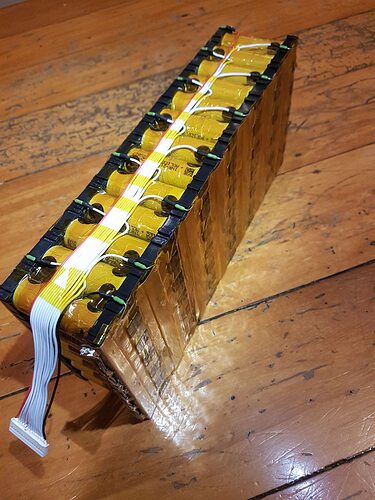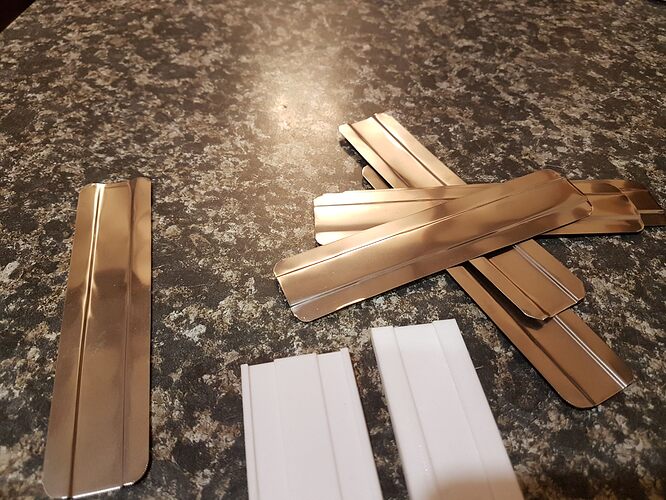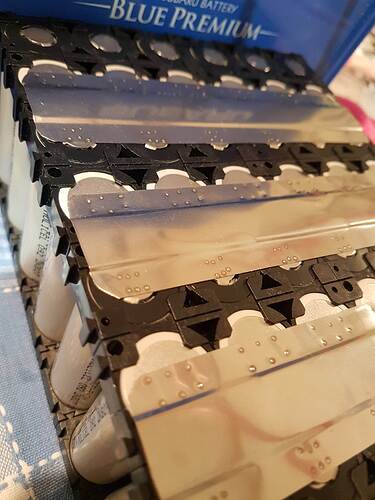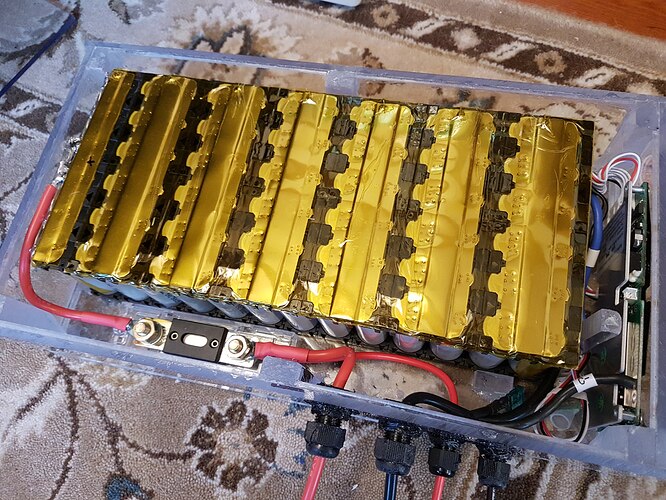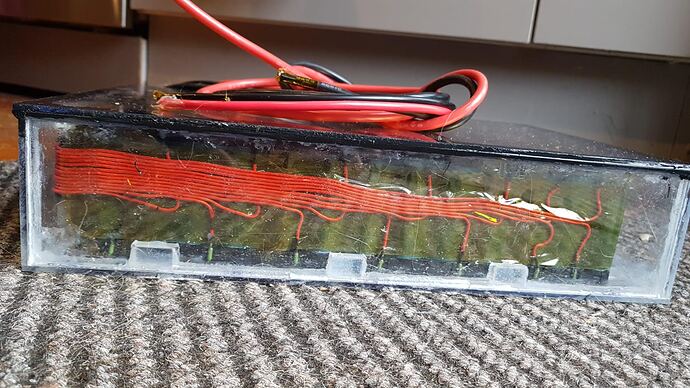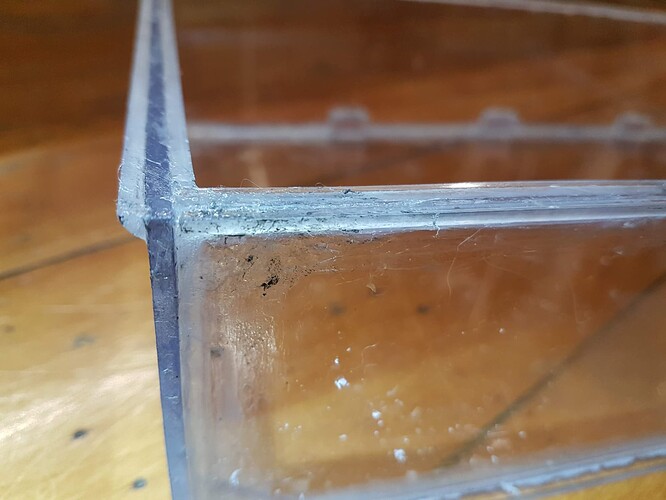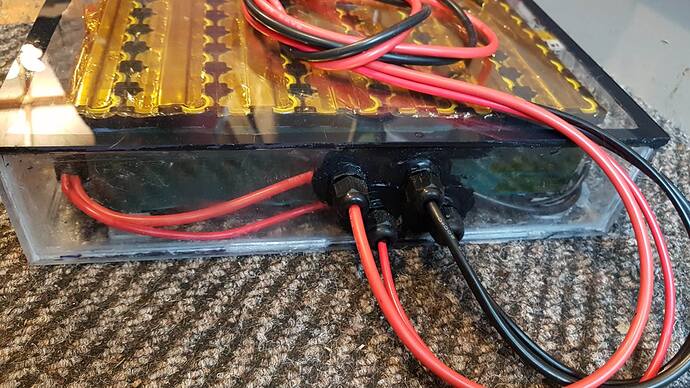I’m building a tow boogie based on Valhalla’s template.
Battery is a 13s6p configuration with 21700 Molicel P42A cells in standard plastic battery holders, rated at about 1200wh. These cells can output a max of 45A each, and would (might) be comfortable putting out 20A for a total of 120A continuous if required (for short bursts). They are supposed to have a good cycle life, around 500 cycles at 20A (with cool down after use), so it should have a much longer service life than lipos.
I’m using a JBD/LithiumBatteryPCB 30A BMS with bluetooth for charge only. It’s nice being able to use an android phone to check the battery status, and it seems to use very little power when it goes into power saving mode after you disconnect the phone app. The BMS leads are routed parallel so that they aren’t going to rub through each other. Littlefuse 2A pico fuses where the BMS leads join the cells, with wires running down the negative end of cells, so that if they did short the cell it wouldn’t cause an issue.
There is a 200A fuse on the discharge lead, bypassing the BMS so that the VESC isn’t limited on current. There’s a 30A blade fuse on the charge lead.
The cells are connected with 30mm 0.2mm pure nickel strip. I made a 3d printed tool (offset air bender) so that I could shape the strip to fit the battery holders.
Welded with a k weld, using my car battery 30J and 1150A.
I was initially going to use an AliExpress plastic electrical enclosure for the battery (approx 370x200mm), but it was flimsy/bendy and I’m sure it would have leaked, so I borrowed Flightjunkie’s idea of a clear plastic box. The walls are 4.5mm polycarbonate throughout the box, with 10mm reinforcement columns in the corners, with a nasty solvent based acrylic glue for strong joints. The polycarbonate case weighs 1.3kg, and it’s 370 x 200 x 76mm. The lid will be held on with m3 screws tapped into the base, and sealed with Bostik ISR 70-03 (great glue, sticks to polycarbonate, sealant and adhesive).
It has an XT90s connector on the discharge leads, and a xt60 for charging.
